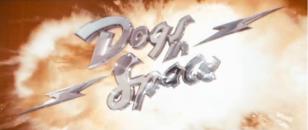AustLit
Latest Issues
AbstractHistoryArchive Description
Publication Details of Only Known VersionEarliest 2 Known Versions of
Works about this Work
-
5 Aussie Musicals You Might Not Have Heard Of – But Really Should See
2023
single work
essay
— Appears in: The Conversation , 10 November 2023; -
Dogs in Space
2022
single work
essay
— Appears in: Melbourne on Film : Cinema That Defines Our City 2022; -
‘The Fucked Room’ : Situating the Dogs in Space Soundtrack and ‘Rooms for the Memory’ in the Diffusion of the Dogs in Space Story
2020
single work
criticism
— Appears in: Urban Australia and Post-punk : Exploring Dogs in Space 2020; (p. 227-245)'Nichols examines the soundtrack album to Dogs in Space, focusing particularly on the tracks recorded by Ollie Olsen for the film and most notably on ‘Rooms for the Memory’, a song revived from Olsen’s band Whirlywirld and sung by Michael Hutchence. The song was a minor hit in Australia at the time and served both as publicity for the film and as a statement of intent for Hutchence and future aspects of his solo career. The chapter also explores the importance of the soundtrack both as a repository for music of the period examined in the film and a curation of recreated or re-recorded songs.'
Source: Abstract.
-
The Strange Life of ‘Shivers’ and Its Place in Dogs in Space
2020
single work
criticism
— Appears in: Urban Australia and Post-punk : Exploring Dogs in Space 2020; (p. 209-226)'Rowland S. Howard’s teenage song ‘Shivers’, written quickly as a bombastic yet in many respects heartfelt ballad, has become an icon of Australian music and Howard’s best-known and best-loved song. The song appears three times in Dogs in Space and its second performance, by Marie Hoy, serves to ratify its status as a ‘classic’ of the late 1970s. MacKinney explores the emergence of the song, its meaning(s) and early recognition of its importance, as well as its value to Howard and his legacy and to the action of the film.'
Source: Abstract.
-
‘Making It’ : The Ears, INXS, and Music Scene Restructuring as Seen Through Dogs in Space
2020
single work
criticism
— Appears in: Urban Australia and Post-punk : Exploring Dogs in Space 2020; (p. 175-208)'Michael Hutchence, of INXS, plays (a version of) Sam Sejavka, of the Ears, in Dogs in Space. This was seen by many in 1986, when the film was released, as a dichotomy, that INXS and The Ears existed at entirely distinct levels, commercially and perhaps also in terms of significance. Referring to contemporary reportage and later interview material, Taylor provides an extensive overview of the careers of both groups, mapping places both played in Melbourne in the period 1979–81. The chapter contemplates commercial success and credibility as well as what constituted a functional, working group in the post-punk era in Australia. She then tracks changes in the industry to the present day to properly contextualise and understand the 1970s–1980s.'
Source: Asbtract.
-
Untitled
2001
single work
review
— Appears in: Senses of Cinema , August no. 15 2001;
— Review of Dogs in Space 1986 single work film/TV -
Punks in Sharehouses Dogs in Space
2013
single work
review
— Appears in: The Lifted Brow , no. 17 2013; (p. 92-93)
— Review of Dogs in Space 1986 single work film/TV -
Dogs in Space
2009
single work
criticism
— Appears in: Senses of Cinema , no. 51 2009; -
Sharing, Not Caring : He Died With A Felafel In His Hand
2001
single work
criticism
— Appears in: Senses of Cinema , September-October no. 16 2001; -
Re-reading Indigenous Cinema : Criticism, White Liberal Guilt and Otherness
2013
single work
criticism
— Appears in: Continuum : Journal of Media & Cultural Studies , vol. 27 no. 6 2013; (p. 763-769) 'In this paper, I will advance a critical perspective of some methodologies on appraising Indigenous films, in terms of their aesthetic as well as their cultural value. In doing this, I propose a cultural and textual approach that gives the films a context for which they can be critically understood. With a heavy emphasis on the political content of many Indigenous films, here I argue for a more critical pedagogical evaluation that considers the challenges of Indigenous films and problems that arise when we ignore to discuss them as ‘cinema’. Through surveying a number of recent Indigenous films, and the criticism that surrounds them, I concentrate on how they can be better used as texts to enhance the study of world cinema and cultural issues of Aboriginality.' (Author's abstract) -
Dogs in Space
2012
single work
essay
— Appears in: World Film Locations : Melbourne 2012; (p. 72-73) -
Radiant Badlands
2013
single work
column
— Appears in: The Lifted Brow , September no. 19 2013; (p. 16-19) In Sydney I grew up with my parents' stories as the ghostly backbone of the city, the warmth of the vanished art and drug culture shimmering just out of reach in the laneways behind Oxford Street or somewhere in the sandstone prison walls of East Sydney Tech. A decaying Martin Sharp print, a wedding present from the artist, leaned up against the wall of my dad's shed; he would tell stories about taking me as an infant to visit Robert Klippel, who burst into tears when he heard my name. My mother would invoke her time spent in the hippy-era Greek Islands, tales complete with run-ins with Leonard Cohen as well as a man who was later arrested as part of the Manson Family Killings.
- Melbourne, Victoria,
- 1978




